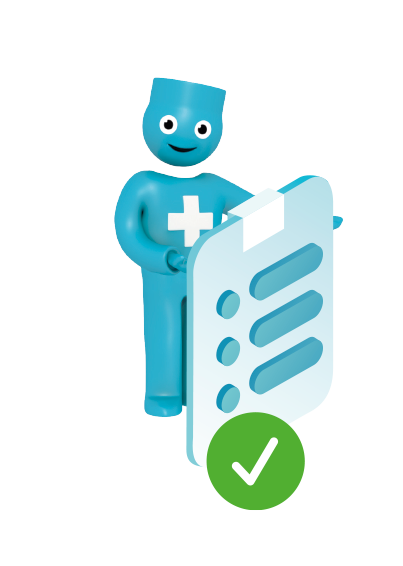The good
application
checklist
Confirm venous diagnosis by checking the pulses or measuring the ABPI.
If in doubt, refer to a specialist.
If it is the first time this patient receives compression:
Make sure you explain the condition and context of the patient’s venous leg ulcer, as well as why they need to wear compression bandages.
For UrgoKTwo
Before starting, make sure you have:
- Scissors
- Surgical tape
Ensure the leg is shaped to look like an inverted cone.
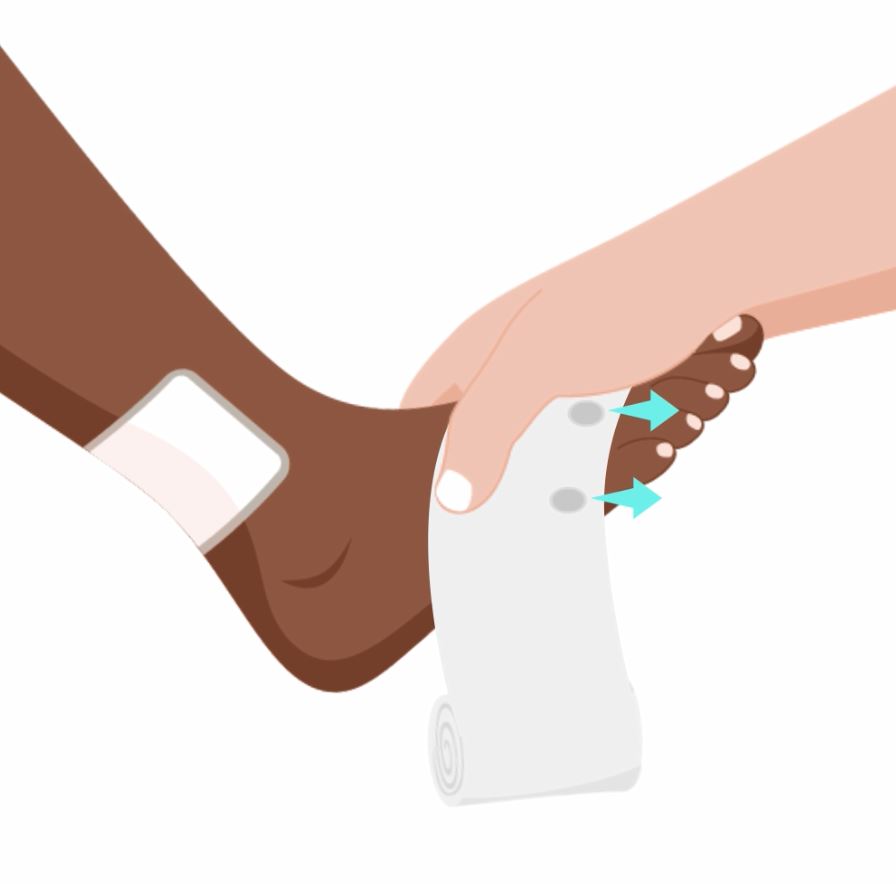
Make sure you start bandaging at the base of the toes.
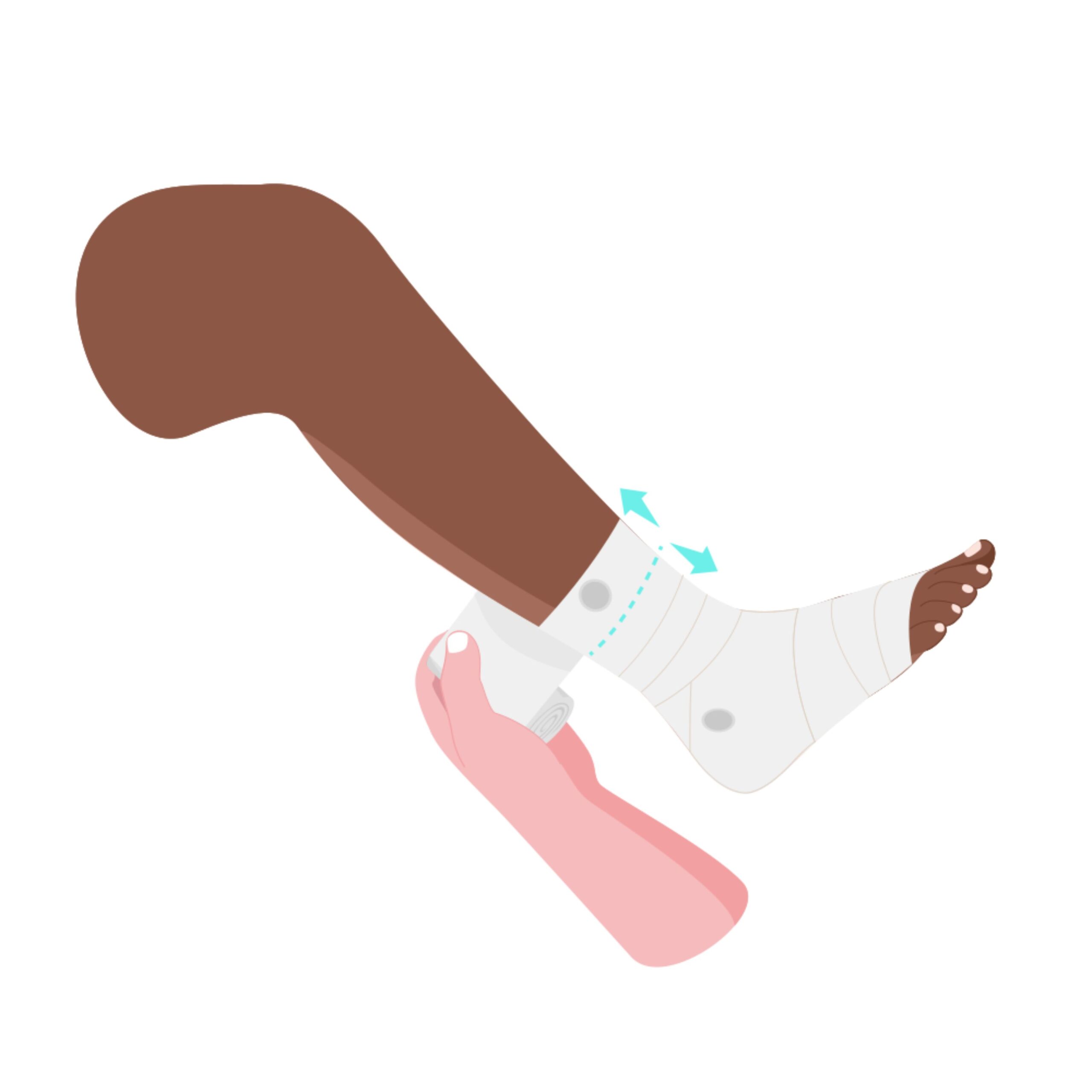
Make sure the heel is covered.
Make sure the overlap is correct. If you are right handed, no pressure indicator should be visible.
If you are left-handed, the overlap should start at the top of the pressure indicators.
Make sure the leg is fully covered: there are no gaps, including at the back of the leg.
Make sure you achieve the correct stretch using the pressure indicators: from rugby ball to football shape.
Make sure you finish 2cm below the knee, front and back.
Make sure you allow a small border of layer 1 (K-Tech white bandage) at the top, underneath the layer 2 (K-Press beige bandage).
Ask your patient
to closely monitor if they experience any discomfort, pain or skin reactions whilst wearing the product. If so, they should refer to their healthcare professional as soon as possible.

What about the other leg?
A patient treated for a venous leg ulcer or mixed leg ulcer with bandages on one leg might be at risk of developing one on the other leg in the future. To prevent this, wearing appropriate compression hosiery is recommended.
Learn more about our hosiery range on https://www.urgomedical.co.uk/ and https://measurego.co.uk/.
The good application checklist
How to check the pulses?
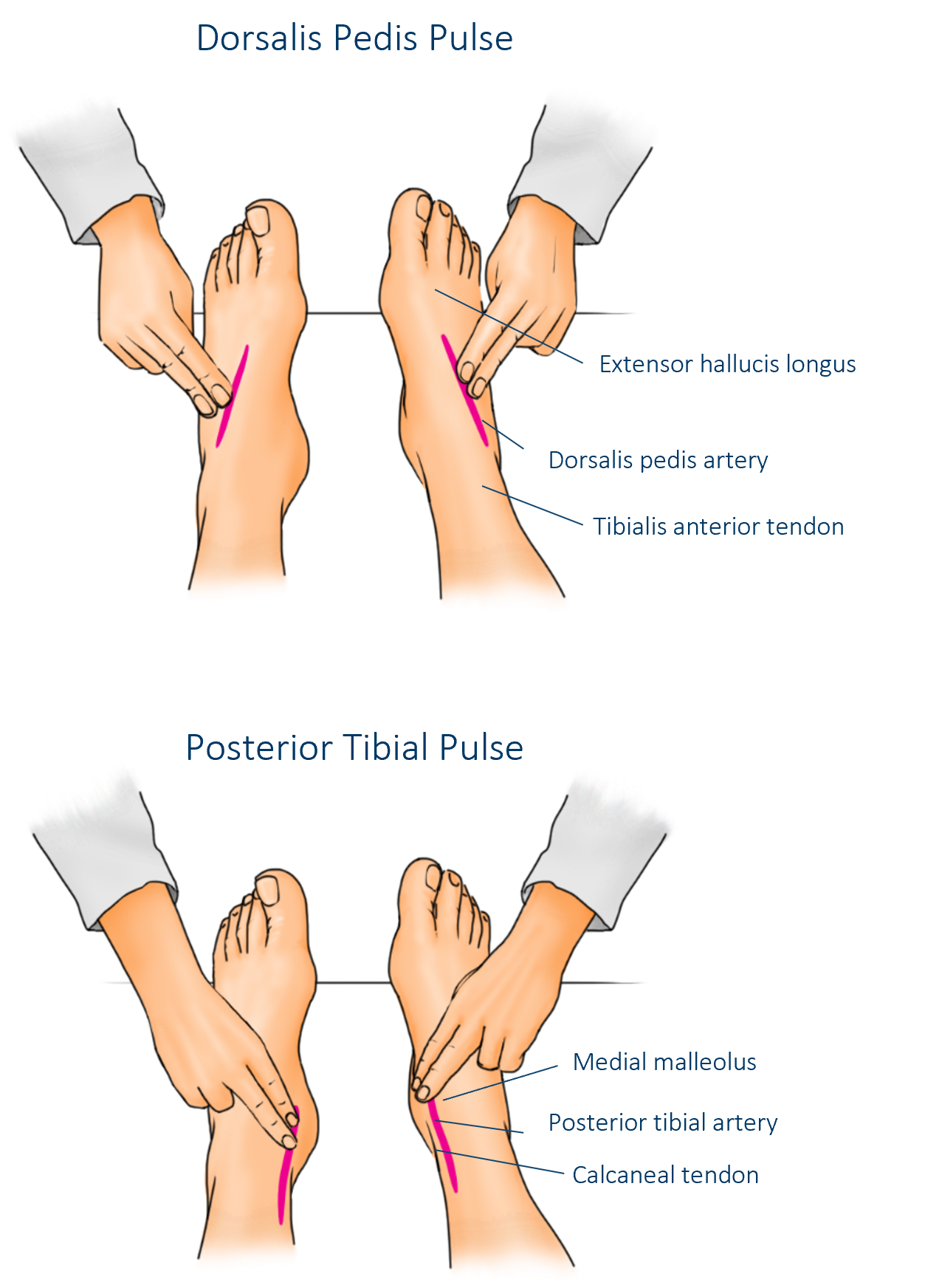
The good application checklist
Want to explain what is a venous leg ulcer and why it needs compression to your patients with short & simple videos?
Check our LEGS GO! Know Your Legs video playlist on Youtube!
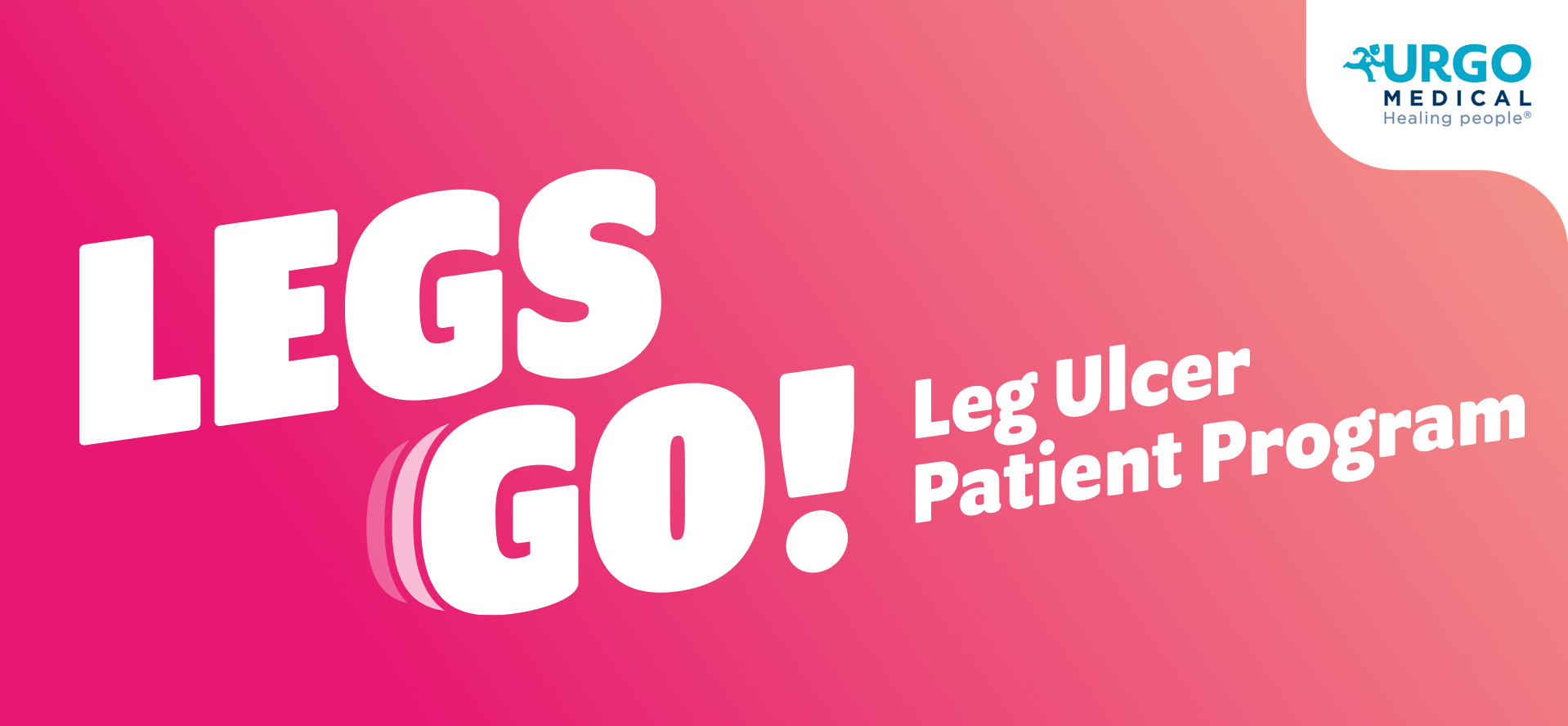
The good application checklist
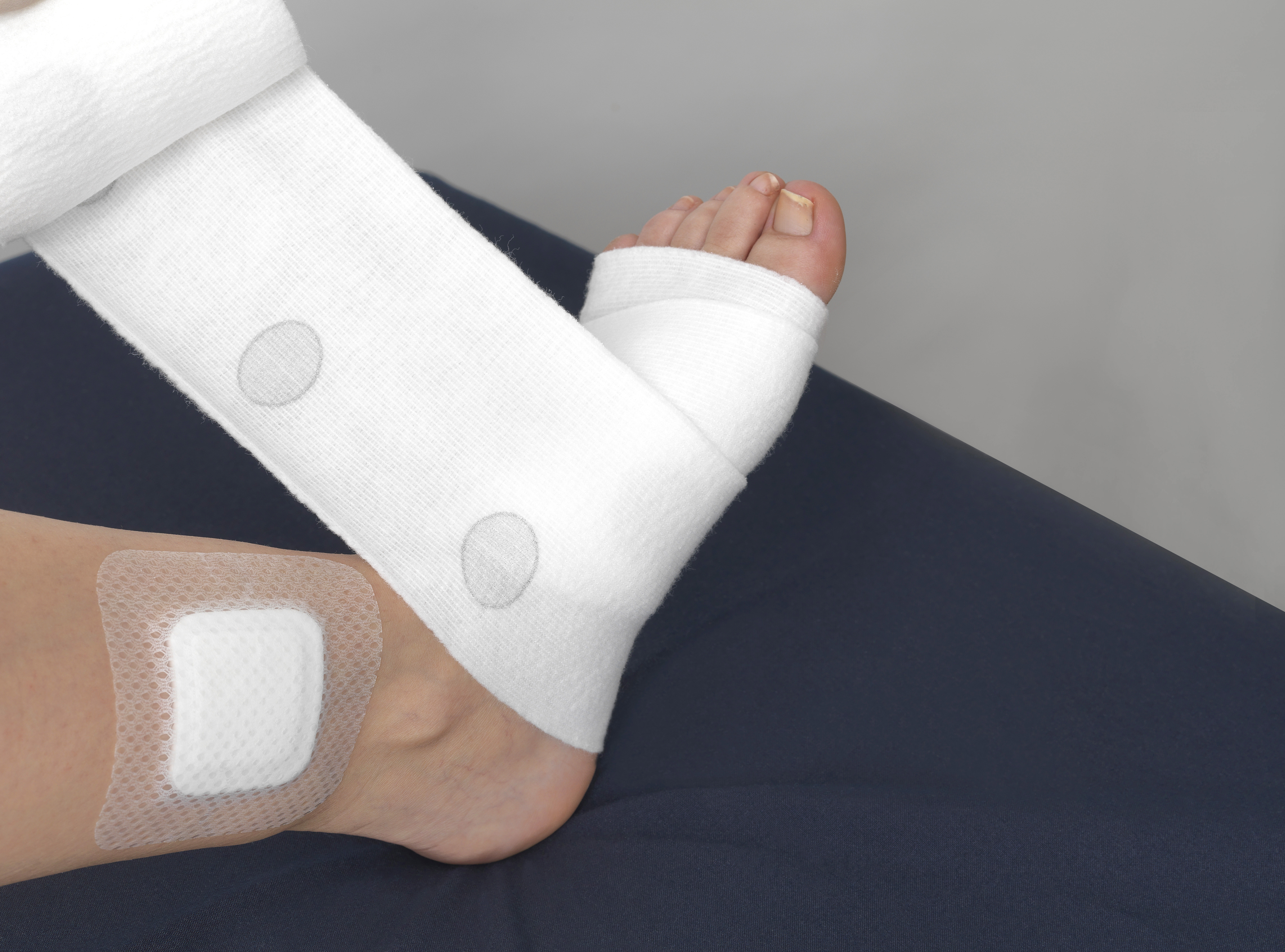
The good application checklist
The heel should be fully covered by the bandages, as in the photos below
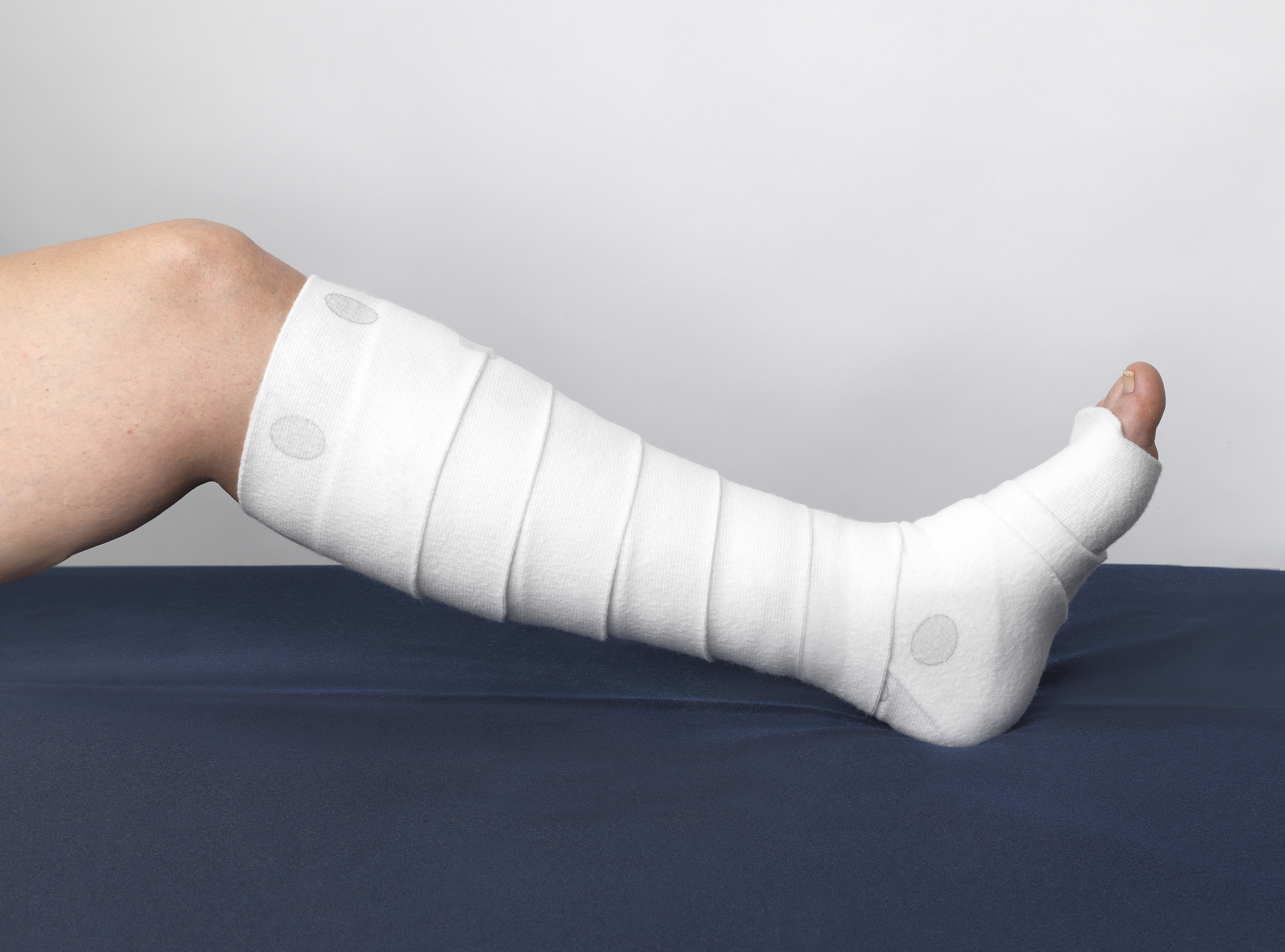

The good application checklist
You should see a cuff of fluff at toes and below the knee
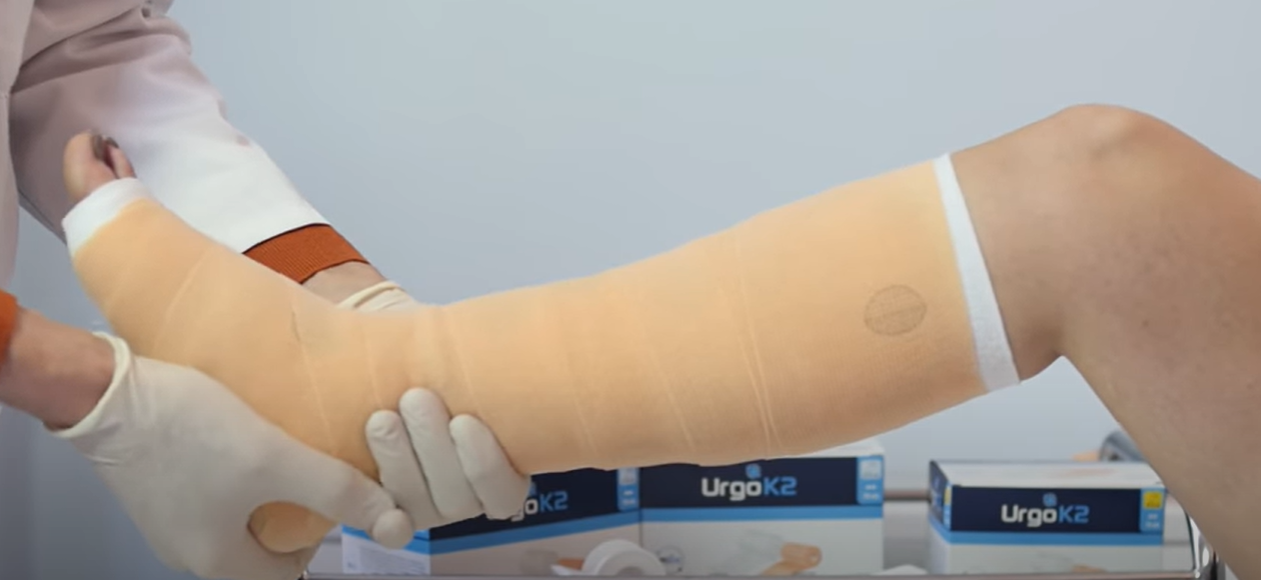
The good application checklist
What tips can I give my patients to boost their healing?
1) Elevate their legs, this will help to reduce the swelling
2) Sensible footwear. It is not easy to find shoes which fit over bandages but it is important that they are comfortable, supportive and do not rub.
3) Regular exercise to keep the calf muscle active to help blood flow back to the heart properly.
